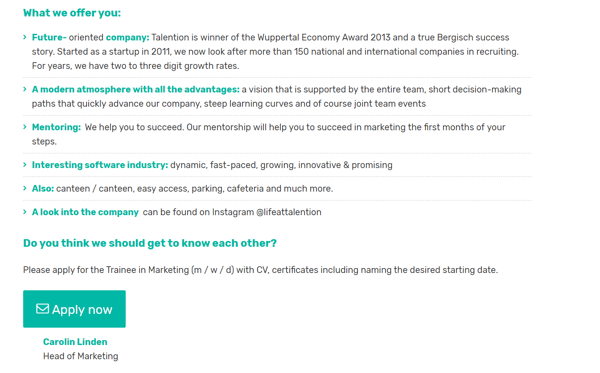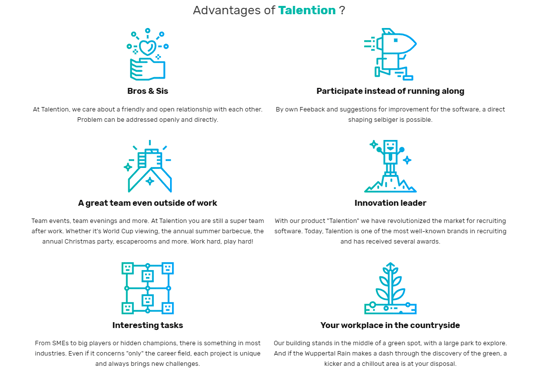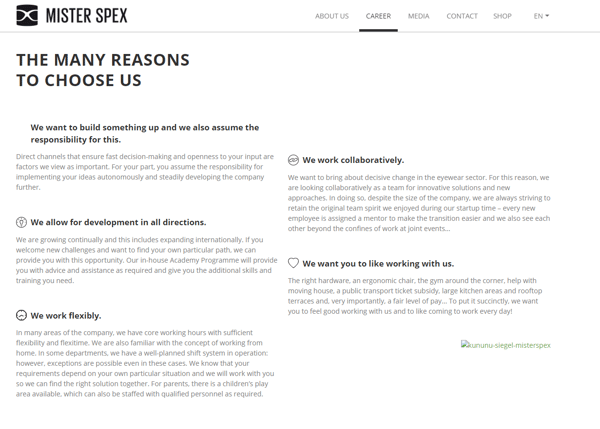
As a recruiter, it’s easy to always think about the recruiting process from the company's perspective. But what about the candidates’ perspective? What is it that actually convinces them to apply to your company? In this article, we’ll explain what an EVP is and how it can be the deciding factor in a candidates’ decision making process.

EVP stands for Employee Value Proposition (EVP). The EVP is the sum of all benefits that make your company attractive as an employer for a specific target group and differentiate you from your competitors.
These benefits should also be authentic, meaning they are accessible and can benefit the average employee on a normal work day (for example, free coffee and tea on a daily basis).
The EVP is an important part of your employer branding strategy. The EVP is the answer to the questions "What do our employees get out of working for us?" or "What do we offer our employees?"
The EVP is made up of five main components:
A short summary of the EVP should be found in every job advertisement. The benefits listed should be in line with the target group for that specific job ad.

Screenshot: Example of Talention's EVP on our job ads
It should also be a focus point on your career page. On your career page, the benefits listed should be more general so that they are applicable to multiple target groups.
 Screenshot: Example of Talention's EVP on our career page
Screenshot: Example of Talention's EVP on our career page
Additionally, your EVP should be highlighted at as many contact points as possible that a candidate has with your employer brand.
In order to create your EVP, you need to first understand your target candidate persona. Candidate personas are ideal candidate profiles for a particular job. They are a fictional, yet realistic description of the optimal candidate. For more specifics on candidate personas, check out our article here.
Creating a candidate personas will help you to create attractive job advertisements and to plan how to best describe your EVP. First, you need to ask questions like:
Once you’ve decided on a candidate persona, you can get more specific with your questions:
In regards to the five components listed above, here are a few examples of the EVP that may apply to your company:

Would you like to learn more about EVP management? We will gladly show you further best practice examples and how you can implement employer branding strategies with the Talention software. You can request a demo here and someone will get in touch with you shortly. Request a demo now.
These Stories on Employer branding
No Comments Yet
Let us know what you think